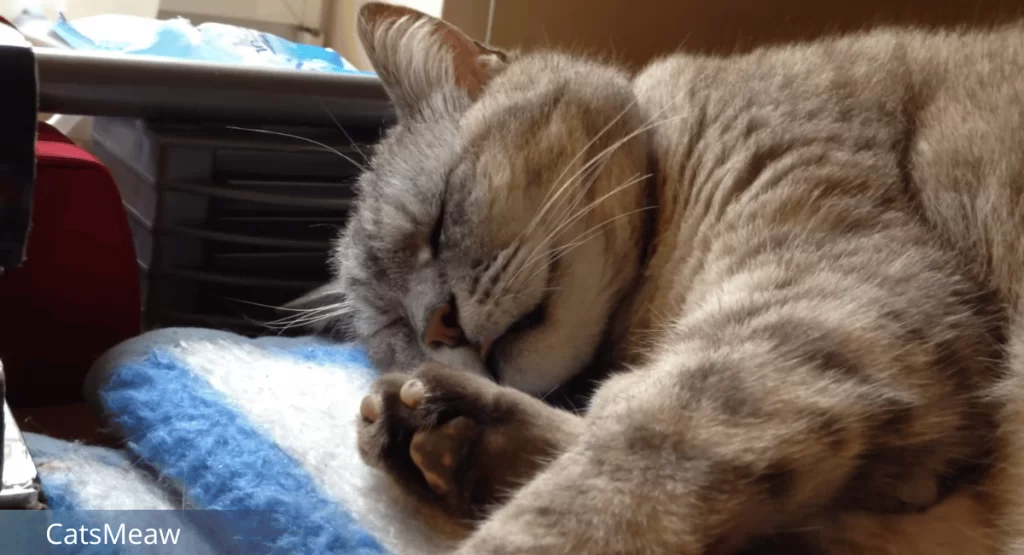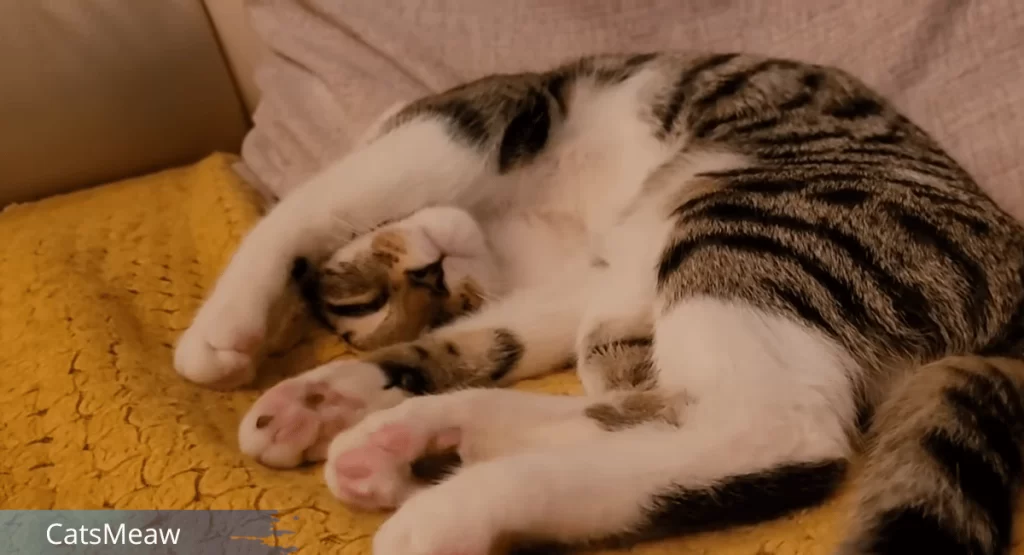Observing your feline companion during their sleep can be a source of curiosity and sometimes concern. You’ve likely noticed your cat’s body or facial muscles twitching while they’re engulfed in slumber. This phenomenon, commonly referred to as “cat twitching in sleep,” may raise questions about its causes and whether it’s a sign of underlying health issues.
This article aims to demystify the reasons behind these involuntary movements and offer guidance on when and how to intervene for your pet’s wellbeing.

Table of Contents
Normal Behaviors during Cat Sleep
Cats spend a significant portion of their day asleep, and like humans, they experience different sleep stages. The cat twitching in sleep observed is often part of the REM (Rapid Eye Movement) stage, where dreams occur. This phase is crucial for cognitive functions and emotional health. Observing your cat’s whiskers, paws, or ears twitching during sleep is generally an indication of normal sleep behavior, reflecting their brains’ active engagement in dreamland scenarios.
Understanding the Reasons behind Cat Twitching in Sleep
The causes of cat twitching in sleep can range from completely benign to more serious health concerns. Primarily, twitching signifies a cat’s deep engagement in the REM sleep stage, where their physical body reacts to dream content. This could involve anything from chasing prey in a dream to more mundane activities. However, understanding when this twitching deviates from the norm is essential for pet owners to ensure their cat’s health and comfort.
Medical Conditions that May Cause Cat Twitching in Sleep
While occasional twitching is typically harmless, persistent or severe twitching could indicate underlying medical conditions. Disorders such as feline hyperesthesia syndrome, neurological issues, or even seizures can manifest through excessive twitching. These conditions require professional veterinary evaluation to diagnose and treat properly, ensuring your cat’s health and quality of life are not compromised.
What to Do if Your Cat Twitches in Sleep
Observing and understanding your cat’s sleep patterns and behaviors is the first step in identifying any issues. Should you notice an increase in twitching frequency or intensity, closely monitor their behavior both during wakefulness and rest. Documenting these observations can be incredibly helpful during veterinary consultations.
Related: Best Interactive Toys for Indoor Cats

In most cases, occasional twitching is normal, but if accompanied by other symptoms like lethargy, disorientation, or changes in appetite, it’s time to consult your veterinarian.
Preventive Measures for Cat Twitching in Sleep
Maintaining a healthy and stress-free environment is key to preventing sleep disturbances and twitching caused by external factors. Regular veterinary check-ups, a balanced diet, and adequate exercise contribute to your cat’s overall wellbeing. Additionally, creating a tranquil sleeping area away from loud noises and disturbances can help ensure your cat achieves restful sleep, minimizing unnecessary twitching caused by stress or discomfort.
Tips for Ensuring a Peaceful Sleep Environment for Your Cat
Creating an ideal sleep environment involves more than a quiet room. Consider the temperature, bedding, and location. A comfortable, warm bed in a quiet, low-traffic area of your home encourages relaxation and deep sleep. Incorporating a familiar scent or gently playing soothing sounds can also help alleviate anxiety, fostering a peaceful atmosphere for your cat to rest.
Promoting Healthy Sleep for Your Feline Friend
In conclusion, while twitching during sleep is a common occurrence in cats, understanding its causes and knowing when it may signal a deeper issue is crucial for every pet owner. By observing your cat’s sleep behavior, creating a stress-free environment, and seeking veterinary advice when necessary, you can ensure your feline friend enjoys the benefits of restful, healthy sleep. Remember, a well-rested cat is a happy, energetic, and healthy companion.
